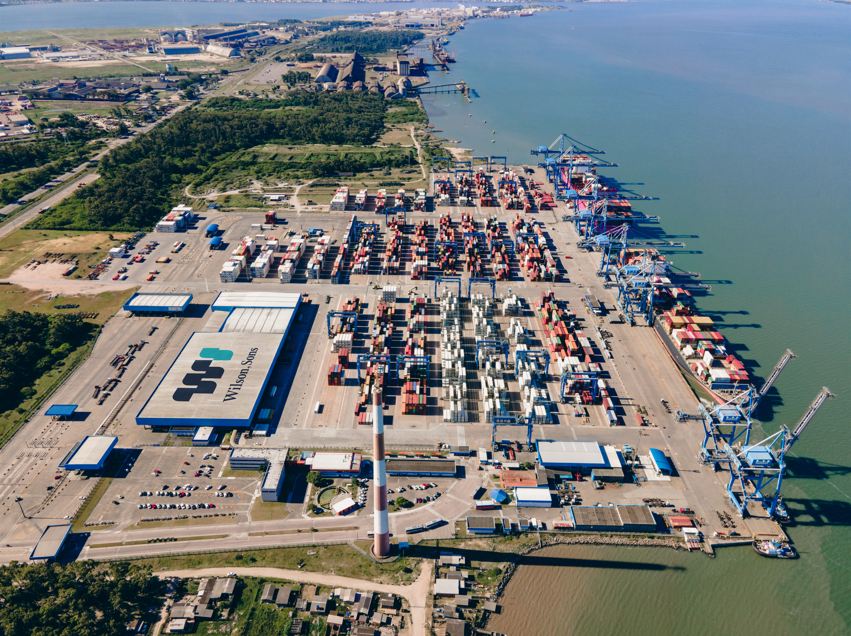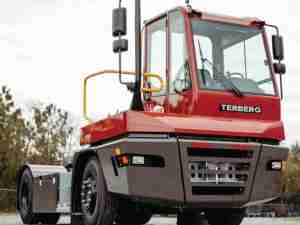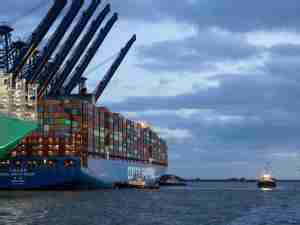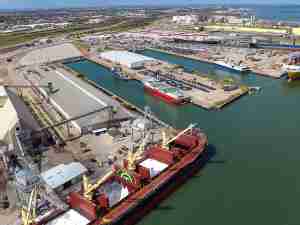The ground-breaking partnership between Wilson Sons’ (PORT3) Rio Grande terminal, South Korean carrier Hyundai Merchant Marine (HMM) and Singapore feeder operator Bengal Tiger Line (BTL) promises to revolutionise the container logistics landscape in South America. This unprecedented collaboration aims to significantly improve the efficiency of services provided to shippers in southern Brazil, Argentina, and Uruguay, marking a historic milestone for maritime logistics in the region. The solution announced involves the integration of a feeder service, designed for the agile transfer of cargo between smaller ports and a hub terminal, with a direct and optimised route between Asia and South America.
The cooperation is an intelligent response to the structural constraints faced by neighbouring countries. The reduced depth of the channels leading to the ports of Argentina and Uruguay limits the loading capacity of medium-sized vessels serving the east coast of South America, forcing them to make double calls along the Brazilian coast, at ports such as Santos, Rio de Janeiro, Paraná, and Santa Catarina, to lighten the load and allow navigation to the Buenos Aires and Montevideo terminals. The depth restriction also prevents the entry of the new generation of New Panamax vessels, which are unable to dock at Argentine and Uruguayan facilities. This situation poses a major challenge to the region's connectivity with the world's main markets - Asia, Europe and the United States.

The use of smaller feeder vessels to serve the Plate ports is an ingenious solution that allows large ships to serve deeper Brazilian ports such as Rio Grande. This operational arrangement not only allows full utilisation of the vessels’ cargo capacity but also brings significant efficiency and cost savings to both carriers and shippers. These benefits include the use of larger vessels, such as the New Panamax class that has recently arrived in Brazil, which maximises the amount of cargo transported per voyage; the reduction of transit times, which may even allow a vessel to be excluded from certain routes, thereby improving operational efficiency; the elimination of double calls; the improvement of service levels through increased call reliability; and the increased sustainability of the ports involved, ensuring alignment with global commitments to carbon neutrality by 2050. This not only helps to reduce operating costs but also facilitates traffic in Brazilian ports, improving the use of these vital infrastructures for the country's economic dynamism.
For the first time in history, a port in the south of Brazil will be the first call on the continent's east coast for a direct route from Asia, ensuring faster transit times for cargoes from both the southern region and the Plate markets. This progress has been made possible by the state-of-the-art infrastructure and privileged location of the terminal and the Port of Rio Grande.
HMM's new weekly service, the Far East-India-Latin America Service (FIL), features 12 vessels making regular calls at Rio Grande with a combined capacity of around 64,000 TEU. The route is designed to meet the needs of exporters and importers in the south of Brazil, while also connecting Uruguayan and Argentine shippers to Asian markets. As a key logistics hub for the Southern Cone, Wilson Sons' terminal will concentrate cargo from across this vast region and connect to the feeder line operated by Bengal Tiger Line. Through a strategic rotation that includes Rio Grande, Buenos Aires and Montevideo, BTL's RBM service will promote efficient integration and streamline trade flows throughout the region. The Singapore feeder ship, named Tiger Plata, has a carrying capacity of 1,700 TEU and will also make weekly calls.
As well as solving a complex logistical bottleneck, this model guarantees unprecedented call reliability and a significant reduction in freight transit times, saving up to four days for imported goods.
The operation will begin with the departure of the Hyundai Grace from the South Korean port of Pusan on 16 April, arriving in Rio Grande on 25 May.
With its strategic location, cutting-edge infrastructure and capacity to handle 1.4 million TEU per year, Rio Grande emerges as the definitive solution to a critical logistics bottleneck on the east coast of South America. The terminal is one of the few in the region capable of accommodating New Panamax vessels and is best equipped to serve as a hub port for the Southern Cone, concentrating significant transshipment volumes and acting as a key force in optimising the South American logistics chain.

_-_28de80_-_939128c573a41e7660e286f3686f2a6e25686350_yes.jpg)








